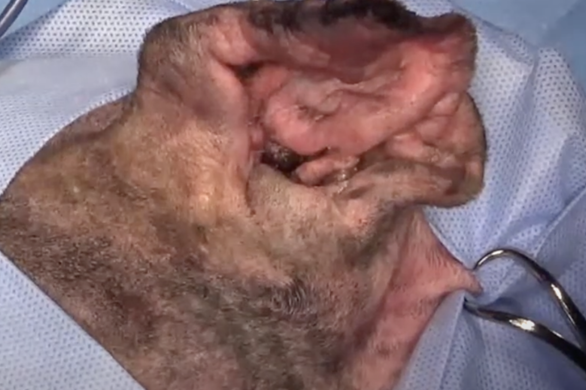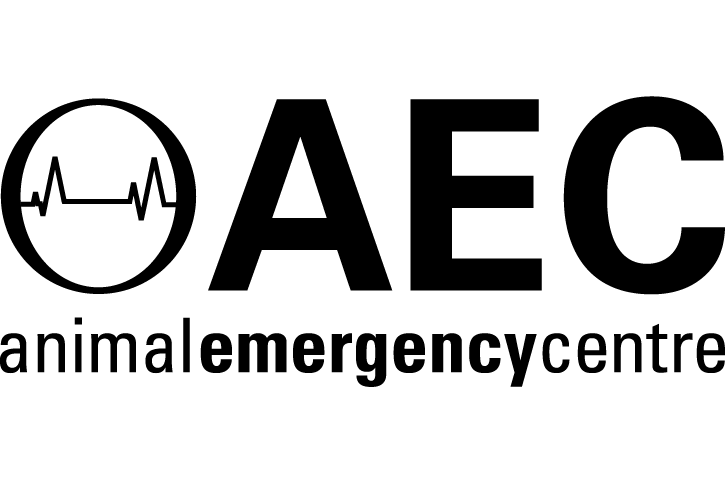Total Ear Canal Ablation for Cats and Dogs
By Dr Charles Kuntz DVM, MS, MACVSc, Diplomate ACVS, ACVS Founding Fellow of Surgical Oncology, Registered Specialist of Small Animal Surgery, Senior Staff Surgeon
How much does total ear canal ablation cost?
This can depend on a lot of factors. Typically the surgical costs can range from $3800-5500 depending on the size of your animal and whether just one ear or both ears are treated. Sometimes advanced imaging such as a CT scan may also be required before surgery is performed, resulting in additional costs.
How much does cat ear surgery cost?
This can differ depending on the type of surgery required and if advanced imaging is performed. The cost of a simple procedure such as a partial pinnectomy, which involves the removal of the ear cartilage, will be less than a more advanced surgery such as a ventral bulla osteotomy, which requires opening the inner ear. Typical costs range from $3000-4200.
Is ear canal surgery the same cost for dogs and cats?
The cost of surgery is dependent on the type of surgery being performed and the size of the animal. Since cats are smaller than most dogs, the amount of medications and space required in the clinic is typically less. The most common ear surgery performed on cats is the bulla osteotomy. It typically requires less surgery time than the total ear canal ablation that is more commonly performed on dogs.
What happens if you can't afford pet surgery?
Due to the level of care, medications and expertise of the surgeon involved, the cost of surgery can be out of reach for some pet owners. In these situations, alternatives may be available such as third-party organisations that can offer credit or low-cost veterinary clinics.
How much is too much for pet surgery?
This is a difficult question to answer. There are many factors that are involved in the decision to perform surgery for an animal. In an ideal world where health cover for animals was the same as humans we wouldn’t need to take the cost of surgery into account. The decision to proceed with surgery would then be solely based on the level of risk to the pet and the benefit to their quality of life it will provide.
What happens if a dog’s ear infection is left untreated?
Untreated external ear infections (otitis externa) will cause chronic pain and irritation to the dog or cat. This will then lead to permanent damage and changes to the ear canal such as narrowing and a build up of scar tissue. If the ear infection then progresses to a middle ear infection (otitis media) a dog or cat can suffer from nausea, vomiting, balance issues and permanent hearing loss.
What does a dog ear infection look like?
Ear infections can present in many ways. The most common ear infection is a fungal infection caused by a yeast organism called malassezia, resulting in a dark brown to black coloured discharge and a foul smell from the ears.
If the infection is bacterial in nature as opposed to fungal, the colour and consistency of the discharge can depend on the type of bacteria. In the majority of cases, the discharge will appear as a yellow and viscous fluid.
Inflammation will also be present, causing the ear to heat up and take on a red hue. Swelling will also be present, causing your pet to feel pain when touched around the ear or head. Animals will often shake their head or scratch at their ears more than usual and sometimes yelp when doing so.
What can I give my dog for chronic ear infections?
The treatment for a chronic ear infection will depend on whether the infection is the result of yeast, bacteria or a combination of the two. A veterinarian will conduct a test to determine the cause of the infection and then prescribe treatments such as antibiotics, antifungals and anti-inflammatories.
Often the best treatments for ear infections are a combination of these medications in the form of topical ointments or gels that are placed into the ear. Some severe infections may require the ear to be cleaned under the general anaesthetic to remove the discharge so that the medications can then work.
Some animals may also require oral medications such as steroid anti-inflammatories like cortisone to reduce the amount of thickening and inflammation in the ear canal.
How do you clean a dog’s ear canal?
There are many products available that either help clean a dog’s ear when infection is present, or maintain a clean ear to help prevent infection in at risk dogs. These will be recommended by your veterinarian. It is best to seek the opinion of a veterinarian regarding whether your pet needs ear cleaning as, if done incorrectly or too frequently, it can actually cause an infection.
The most common technique is to administer a small amount of ear cleaner into the ear and then massage the ear canal with a finger and thumb. The excess cleaner and debris can be wiped away from the ear canal opening with a cotton ball and the rest will be removed when the pet shakes their head. This procedure is best performed outside.
What is the black stuff in my dog's ear?
Some dogs will have a small amount of brown to black material present at the external opening of their ear canal. This can be normal for some dogs and is typically built up wax that has been produced from deeper in the ear canal.
Most of the time black material can be a sign of a yeast/fungal infection. This is caused by the organism Malassezia Pachydermatis, which lives in the ears but under the right conditions can rapidly grow in number causing an infection. Due to its nature as a type of yeast, infections can sometimes resemble the smell of vegemite.
What food causes ear infections for dogs?
There is no specific food that will increase the risk of your dog getting an ear infection. However, there are dogs that suffer from dietary sensitivities or allergies that cause skin disease and dermatitis. Since the lining of the ear canals are predominately made of skin, this leads to inflammation which can then result in overgrowth of bacteria or yeast.
Can I drain a hematoma myself?
The short answer is no. An aural haematoma is the accumulation of blood between the cartilage layers of the pinna (visible area of the outer ear). There is often an underlying traumatic cause, the most common of which being scratching and head shaking due to a concurrent ear infection. Drainage of haematoma requires the animal to be very still, sometimes requiring sedation or general anaesthesia.
Some haematomas can be treated by draining them and then injecting a cortisone, however there is a moderate risk of recurrence and hence, surgery may then be required to completely treat the haematoma.
Treatment of the underlying infection will also be required to ensure the scratching and head shaking stops.
You can read more of our specialist veterinary news and stories here.
For referring vets, please use our online referral form to submit a case enquiry.
Our Network
Animal Referral & Emergency network is the largest specialty and referral network in Australia, consisting of over 20 sites. With over 1,200 dedicated team members, including over 600 nurses and over 390 veterinarians (including specialists and registrars), we provide exceptional care for your pets. Count on us for expert medical attention and comprehensive veterinary services.
.png)









